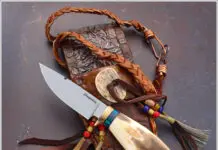
Exploring the outdoors, peering at plants and watching wildlife not only offer a mood boost, but also can bolster conservation efforts in Oklahoma. From logging nature sightings to sharing data about birds on an app, there are different avenues residents can use to share their observations which, in turn, can help inform biologists and naturalists about a species or natural resources at large.
Those observations can ultimately contribute to the “long-term value in being aware of our natural environment and trying to maintain that natural environment,” says Jena Donnell, the communications specialist with the Oklahoma Department of Wildlife Conservation.
What may seem like simple acts, such as watching birds in your backyard or planting flowers that benefit pollinators, can have long-term benefits by raising more awareness or benefiting wildlife.
“It certainly makes an impact,” Donnell says.
Take, for example, reporting a sighting on the Department of Wildlife Conservation’s website – wildlifedepartment.com. Residents can share info, details and photos of fish, wildlife and plants they’ve seen in their backyard, during their commute, or on a hike, hunting or fishing trip. That information can contribute to ongoing Wildlife Department projects or help biologists plan for future conservation efforts, according to Donnell.
Donnell says other opportunities to note sightings are through free nature apps like iNaturalist or eBird. The iNaturalist app collects observation details for all organisms, while eBird focuses on bird sightings.
Another program in the state is helping students learn the value of data collection and exploration of the outdoors. The Backyard Explorers program with Southeast Oklahoma Library System is a program for elementary-age children and their families to learn more about science and nature through play and exploration, says Heath Stanfield, manager of the McAlester Public Library.
The program features different themes that also involve a data collection element and activities that relate to the theme, such as a scavenger hunt. Topics have included weather, insects, leaves, water cycles and themes about soil, rocks and trees. Participants also are encouraged to find out more about those themes using library resources, Stanfield says. The topics introduced in the program also relate to local resources and wildlife.
“It’s all relevant to our area and our community,” says Stanfield.
In addition, Stanfield mentions that the program can serve as an introduction for kids about the value of citizen science and the practice of data collection. It also can help foster an appreciation for the outdoors.
“It gives families a task to do outside,” whether that’s in their backyard or a local park,” he says. “It emphasizes that nature is all around them.”
Citizen Science Opportunities
Citizen science is the practice of public participation and collaboration in scientific research to increase scientific knowledge. Through citizen science, people share and contribute to data monitoring and collection programs.
Here are some citizen science programs in Oklahoma:
Blue Thumb is a statewide program that trains volunteers to monitor creeks and streams and share their knowledge of water quality with others.
OK Invasives encourages citizens throughout Oklahoma to find and report invasive plant species in the places they live and work. The data collected from observations will be used by land managers to plan and eradicate infestations before they take over the landscape.






















